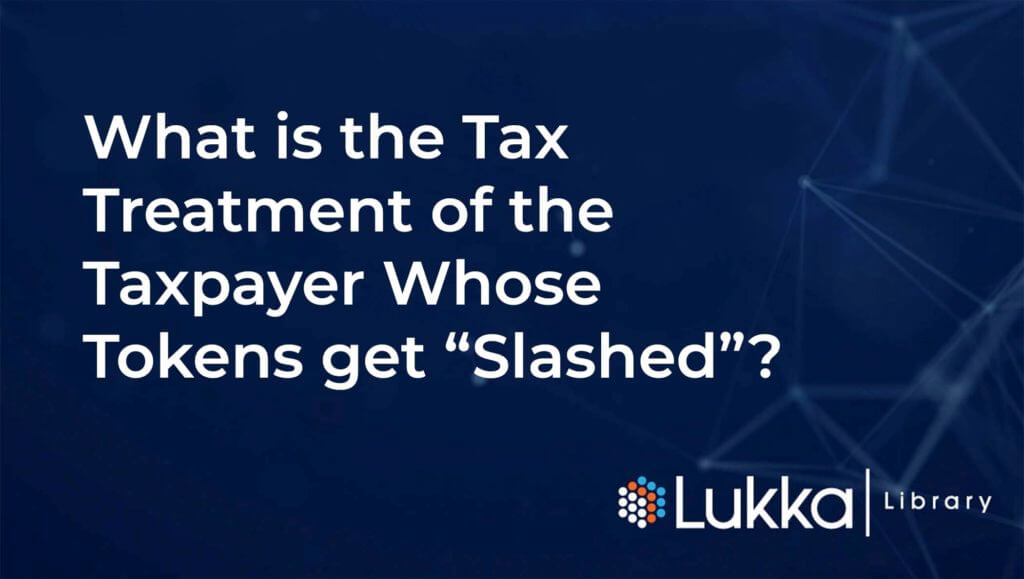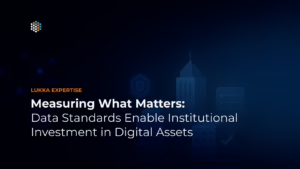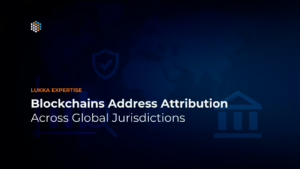Author: David Shakow, Professor Emeritus, University of Pennsylvania School of Law1
The discussion in this document reflects legal principles as of February 24, 2020.
In the proof of work consensus structure that is used by Bitcoin, for example, the validity of new transactions is confirmed by “miners.” A cryptocurrency on a block chain using proof of stake consensus makes use of “validators” who confirm transactions. The validator is required to remain online at all times because transactions need to be validated frequently.
A validator is required to “stake” some of its tokens to show the bona fides of its commitment to the validating process. It is rewarded for its work as long as it accomplishes its task correctly. If it fails to validate transactions that are its responsibility, or if it validates transactions that it should not have, it may suffer a penalty. This penalty consists of its forfeiting some of the tokens that were in its stake. This process is called slashing.
The measure of the validator’s loss is the basis of the tokens that have been slashed. What is the character of that loss? Even if the validator’s activities rise to the level of a trade or business,2 its tokens would not be ordinary assets because it is unlikely they fit the definition of property held primarily for sale to customers in the ordinary course of business, a type of asset excluded from
the capital asset category. The reason is that the validator’s business is validating, not holding tokens that customers come to it to buy, so the tokens are probably not held “primarily for sale to customers.” Section 1221(a)(1). Moreover, since tokens are not depreciable property, they are not ordinary assets under section 1221(a)(2), and a loss on disposition of the tokens would not be described in section 1231 (a type of loss that may be treated as an ordinary loss in some situations).
Thus, it would seem that the tokens should be treated as capital assets. But does that mean that the loss on the tokens is a capital loss? For the loss to be a capital loss, it must have resulted from a “sale or exchange” of those tokens. Does slashing the tokens constitute their sale or exchange?
To determine the tax consequences of slashing, one must first determine the results of slashing. In general, slashed tokens may be redistributed to other holders or may be “burned” (that is, removed from the block chain). On the face of it, these actions do not appear to be sales or exchanges. Slashing is certainly not a sale. The concept of an exchange normally includes the transfer of the tokens to another holder. In Helvering v. William Flaccus Oak Leather Co., 313 U.S. 247 (1941), the Supreme Court said that “’exchange’. . . implies reciprocal transfers of capital assets.” Even if the slashing results in the transfer of tokens to another holder, there is nothing reciprocal in that transfer here. Accordingly, it would seem that slashing does not constitute an exchange.
However, if the tokens are not redistributed but are burned, the analysis is complicated by section 1234A. That section is aimed at situations where taxpayers attempt to convert losses on capital assets into ordinary losses by avoiding the sale or exchange. It applies to a “cancellation, lapse, expiration, or other termination,” and treats the resulting gain or loss as a gain or loss from the sale of a capital asset. This broad language at first blush, would seem to cover the consequences of slashing.
However, what the provision applies to is the cancellation, etc., of “a right or obligation . . . with respect to property which is . . . a capital asset.” Slashing is not the cancellation or other termination of a right or obligation with respect to the token: it is the cancellation or other termination of the token itself.
Whether such a termination comes within the terms of section 1234A was the subject of Pilgrim’s Pride Corp. v. Commissioner, 141 T.C. 533 (2013), rev’d, 779 F.3d 311 (5th Cir. 2015). The Tax Court held that the cancellation or other termination of the item itself was certainly encompassed within the ambit of section 1234A if a right or obligation with respect to the asset is within that section. It noted other provisions where the term “with respect to” included a reference to the property itself. However, the Fifth Circuit reversed, on the basis of its view of the plain meaning of the statute. In other contexts, other courts have similarly approached section 1234A, stressing the plain meaning of the statute. CRI-Leslie LLC v. Commissioner, 147 T.C. 217 (2016), aff’d, 882 F.3d 1026 (11th Cir. 2018) (section 1234A does not apply to section 1231 assets).
The IRS is likely to advance the position of the Tax Court in Pilgrim’s Pride in arguing this issue. If the Tax Court’s view is accepted, slashing resulting in the cancellation of the token would seem to be covered by 1234A, and the loss would be capital. Although the IRS lost in Pilgrim’s Pride, it could still advance its argument outside the Fifth Circuit, where the case was decided.4 Although the Fifth Circuit’s holding in Pilgrim’s Pride would pose a significant roadblock for the IRS, that case is not strictly binding outside the Fifth Circuit.
But if the tokens are transferred to others, there would not seem to be any termination of the token itself, although, if the Tax Court’s reasoning were extended, one could say that the validator’s ownership rights with respect to the tokens have been terminated.
Not surprisingly, the IRS and Congress can be unsympathetic to taxpayers who wish to avoid capital loss treatment by claiming that their capital asset was not sold or disposed of, although the rules that have been developed have not been extended to tokens. For example, when stock or securities become worthless, a taxpayer can recognize a loss. Such a loss is not the result of a sale or exchange. However, Congress, in section 165(g), normally treats the worthlessness of stock as a sale or exchange, thus resulting in a capital loss, not an ordinary loss, for the holder.
Taxpayers have tried to avoid this problem by “abandoning” their stock before it becomes worthless. The IRS now takes the position that such abandoned stock becomes worthless (and hence subject to section 165(g), which creates an exchange). Treas. Reg. § 1.165-5(i).
Taxpayers abandoning partnership interests were met with the argument that the partner abandoning its partnership interest has an amount realized, since, under the provisions of subchapter K, the relief of the partnerships liabilities for the abandoning partner can be considered an amount realized and treated as part of an exchange. Only a partner with no relationship to any of the partnership’s liabilities can get ordinary treatment by abandoning its partnership interest. Rev. Rul. 93-80, 1993-2 C.B. 239.
Could the validator whose tokens are slashed run into such a negative result? It would seem that, at the moment, the answer is no. Even if the tokens in question had been used as security for a loan, the slashing of those tokens would not result in any relief of the taxpayer’s liability. Relief of the liability might only arise in the context of a non-recourse loan. But it is quite unlikely that, where the tokens were security for a nonrecourse loan, the lender would allow the tokens to be staked in the proof of stake structure.
Accordingly, it would seem that a validator whose tokens were slashed could get ordinary treatment for its loss, measured by the basis it had in those tokens.
1 The statements in this paper represent the views of the author only and should not be attributed to the University of Pennsylvania School of Law. Further, this document should not be treated as legal advice to any reader or to Lukka.
2 See Commissioner v. Groetzinger, 480 US 23 (1987) (gambler is in a trade or business, even if he has no customers).
3 The Fifth Circuit encompasses Louisiana, Mississippi and Texas.



